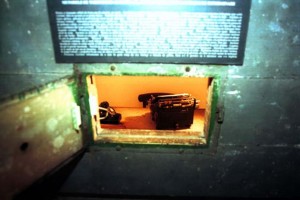
This is one of the first museum presentations on the organisation and operations of this institution of the communist regime in Romania. Documents, photographs, propaganda booklets, and maps reveal the history of the Securitate between 1948 and 1989.
Officially established by decree no. 221/30 of August 1948, the Securitate was the culmination of a process that had begun in autumn 1944, when the Ministry of Internal Affairs was infiltrated by the communists. According to the decree, the role of the General Department for the People’s Security (DGSP) was to “defend democratic conquests and guarantee the safety of the People’s Republic of Romania against enemies inside and outside the country”. Defending democratic conquests in fact meant maintaining the communists in office.
The directorship of the D.G.S.P., carrying the rank of lieutenant general, was given to Gheorghe Pintilie (Pantelei Bodnarenko, an ethnic Ukrainian), and two Soviet agents, Alexandru Nicolschi (Boris Grünberg, an N.K.V.D. officer originally from Bessarabia) and Vladimir Mazuru (a Ukrainian born in northern Bukowina), were appointed as his
deputies, receiving the rank of major general. No cadre was appointed to the leadership of the Securitate without the prior approval of the Soviet advisers.
Once the vast majority of the members of the former royal Security Police had been purged and arrested, communist agents poured into the Securitate: fellow travellers or opportunists willing to betray their former colleagues, employees of Al. Nicolschi in the Detective Corps, ex-servicemen from the Moscow-sponsored Tudor Vladimirescu Division (most of whom had spent the war in exile in the Soviet Union), Party members, and a large number of newly employed militants of “healthy social origin”, recommended by the Party. Many of them had taken part in communist intimidation against the opposition both before and after the installation of the Petru Groza Government.
In 1948, the first budget for the organisation stipulated 4,641 positions, of which 3,549 had been occupied by 11 February 1949: 64% were taken by labourers, 4% by peasants, 28% by white-collar workers, 2% by persons of unspecified background, and 2% by intellectuals. By 1951, in line with the communists’ escalation of “class warfare” against the rest of the population, the staff of the D.G.S.P. had increased fivefold (up to 15,280 positions), preserving the same criteria for appointment: “healthy social origin” and “class hatred”.
In the 1950s, at the instigation of the Party, the Interior Ministry tried to liquidate all opponents of the regime. It was thus that “administrative arrest” came into being: arrest without warrant, investigation or trial. Under the pretext of “re-education through labour”, hundreds of thousands of people were arrested and sent to labour camps, where they were subjected to a brutal regime of hunger, exhaustion, and humiliation. After the general amnesty of 1964, Romania’s official propaganda claimed that there were no political detainees. However, political arrests continued to be made: for plotting, propaganda against the regime, conspiracy against the social order, etc.
Thenceforward the Securitate claimed to make appeal to citizens’ conscience. This meant increasing the number of informers, who made written undertakings to signal any “dangers threatening the homeland”.
In the 1980s the Securitate conceived a methodical programme of mass indoctrination and manipulation, using rumours, machinations, frame-ups, denunciations, provocation, the fomenting of conflict between various segments of the population, public humiliation, increasing censorship, and the repression of the slightest gestures of independence on the part of intellectuals.
Despite these draconian measures, the fall of the Ceauşescu regime was inevitable, but the traces of this violation of the national consciousness persist even today in the mentality of many members of the public.









